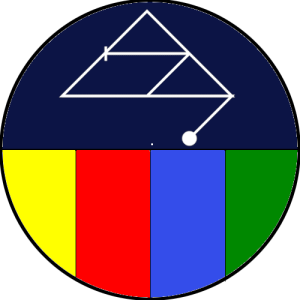You’ve started to awaken to the path and found a place to call sacred. Now let’s talk about something that often excites beginners: the tools of Wicca.
If you’ve ever seen pictures of a Wiccan altar, you’ve probably noticed it looks a bit like a magician’s table—wands, chalices, athames, pentacles, cauldrons, crystals, candles, herbs. It can feel overwhelming, like you need to run to the nearest occult shop and buy one of everything just to get started. But here’s the secret: you don’t.
Tools in Wicca are not about power stored in the object itself—they’re about the meaning you place in them, and how they help you focus energy and intention. In fact, many experienced Wiccans will tell you that your most important tool is you—your will, your focus, your spirit. Everything else is there to support that.
The Traditional Tools
Traditionally, Wiccans work with a few key tools. Here’s a very quick introduction:
Athame: A ritual knife, usually not used for cutting physical things, but for directing energy.
Wand: A tool for channeling energy, often connected with Air or Fire depending on the tradition.
Chalice: A cup, usually representing Water, emotions, and receptivity.
Pentacle: A flat disc (often inscribed with a pentagram) representing Earth, grounding, and protection.
Cauldron: A symbol of transformation, used for burning herbs, mixing potions, or simply as a sacred vessel.
You might also see bells, brooms (besoms), candles, and bowls of water or salt.
But here’s the thing: these aren’t mandatory starter-kit items. They’re symbols. You can begin with substitutes—or with nothing at all.
Everyday Substitutes
Don’t have a wand? A stick from the backyard works beautifully.
No chalice? A teacup or mug will do.
No pentacle? Draw a star on a piece of paper.
Can’t find a cauldron? Use a small cooking pot.
What matters is not that you own the “correct” object, but that you treat it with respect and intention. When you hold that stick and call it your wand, it becomes your wand. When you pour water into a mug and dedicate it as your chalice, it takes on sacred meaning.
In fact, some of the most powerful tools you’ll ever use may be the simplest, because they connect directly to your creativity and heart.
The Living Toolset
Beyond the physical, remember that you are the living toolset. Your hands can raise energy. Your breath can cleanse a space. Your voice can call on the elements or the divine. A circle cast with nothing but your imagination is just as real as one drawn with a blade of silver.
Wicca isn’t about what you buy. It’s about how you bring yourself into relationship with the sacred. The objects just give you a way to focus, a physical anchor for your intentions.
A Simple Practice for Today
Look around your home and gather 2–3 everyday items that could serve as Wiccan tools. Maybe a candle for Fire, a bowl of water for Water, or a stone for Earth. Place them in your sacred space from yesterday.
Sit for a moment with each item. Hold it, breathe, and say quietly:
“I dedicate this [stone/cup/candle] as my [pentacle/chalice/fire candle]. May it serve me well in sacred work.”
That’s all it takes. You now have your first set of tools—simple, meaningful, and yours.
Journaling Prompt
Write about the items you chose. Why did you pick them? How do they make you feel when you hold them? Do they carry any personal story or meaning?
Then, reflect on this question: How do I feel about the idea that the real tool of magic is me?
Closing Thought
Today you’ve learned that tools are helpers, not requirements. Whether you work with a silver chalice or a chipped mug, what matters is the intention you pour into it. As you move forward, you’ll likely collect tools over time—but don’t ever feel that your practice depends on them. The craft lives in your heart, your hands, and your spirit.
You’ve now created both a place and a set of tools to work with. Tomorrow, we’ll explore the living forces you’ll call upon with those tools: the elements.


